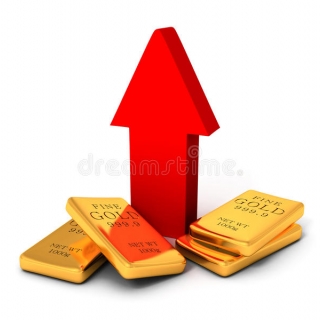


Gold prices have topped $3,000 an ounce for the first time, driven higher by massive central bank spending, fragile economies around the world and President Donald Trump's efforts to rewrite the rules of global trade by imposing tariffs on strategic allies and rivals.
Bullion prices rose as much as 0.4% to $3,001.20 an ounce on Friday.
The move through the psychological $3,000 level underscores gold's centuries-long role as a store of value in turbulent times and as a gauge of fear in markets. In the past quarter-century, prices have risen 10-fold, even outperforming the S&P 500, the benchmark for U.S. stocks, which has quadrupled over the same period. As traders braced for tariffs, U.S. gold prices surged above other international benchmarks, prompting traders to rush bullion into America in large volumes before the levies take effect. More than 23 million ounces of gold, worth about $70 billion, poured into New York's Comex futures exchange between Election Day and March 12. The influx was so large that it helped push the U.S. trade deficit to a record in January.
Gold's price surges typically follow broader economic and political pressures. The metal topped $1,000 an ounce after the financial crisis, and topped $2,000 during the Covid pandemic. Prices fell back toward $1,600 after the pandemic, but began to rise again in 2023, driven by central banks buying bullion to diversify away from the dollar, on concerns that the currency made them vulnerable to punitive U.S. action. In early 2024, the market surged again, driven by buying in China, where concerns about the country's economy have been growing.
The rally gained further momentum after the U.S. election, as markets absorbed the new administration's aggressive trade policies. "Gold is an asset that has been able to hold its value under some of the biggest macroeconomic dislocations that we've ever seen," said Thomas Kertsos, co-portfolio manager at First Eagle Investment Management LLC. "We've seen that over the centuries gold has been able to — despite its volatility — always come back and always maintain its purchasing power, while providing significant liquidity." Gold's recent rally has come despite a couple of headwinds: higher interest rates and a strong U.S. dollar. When bonds or cash in the bank are providing solid returns, gold, which doesn't earn interest, becomes less attractive. The U.S. dollar is the primary currency in which gold is bought and sold. When it becomes more expensive for holders of other currencies, it typically puts selling pressure on the metal.
Source: Bloomberg
Gold prices rose more than 1% on Wednesday (November 5), with a slight weakening of the US dollar and widespread risk-off sentiment boosting demand. Spot gold rose 0.8% to $3,966.54 per ounce as of 1...
Gold prices rise in early trading as investors await U.S. private payroll data for cues on the Federal Reserve's next policy move. Futures in New York are up 0.9% to $3,991.60 a troy ounce. "Gold pri...
Gold edges higher on a possible technical recovery after front-month gold futures settled down 1.3% overnight. It shouldn't be a big surprise to see the precious metal consolidating in a lower $3,800-...
Gold slipped slightly Tuesday, pressured by a stronger U.S. dollar and lingering uncertainty over the Federal Reserve's next policy move. Spot gold fell 0.8% to $3,970.08 per ounce and U.S. Gold Futu...
Gold held steady amid disagreements among three Federal Reserve policymakers over the next interest rate cut next month, with the U.S. dollar trading near its highest level in months. The price of bu...
The ISM Services PMI rose to 52.4 in October 2025 from 50 in September, beating forecasts of 50.8, pointing to the strongest expansion in the services sector since February. Both business activity (54.3 vs 49.9) and new orders (56.2 vs 50.4)...
The three major US stock averages fluctuated between small gains and losses on Wednesday, attempting to rebound from Tuesday's weak session, when concerns over lofty AI valuations weighed on sentiment while earnings remained in focus. The tech...
Employment at US companies rose in October, signaling stabilization in the labor market after two straight months of declines. Private-sector jobs increased by 42,000 after a revised 29,000 decline in the previous month, according to ADP Research...
 Asian stocks opened lower on Tuesday, reversing Wall Street's rally fueled by Amazon's massive $38 billion deal with OpenAI. Stock markets in South...
Asian stocks opened lower on Tuesday, reversing Wall Street's rally fueled by Amazon's massive $38 billion deal with OpenAI. Stock markets in South...
 The economic activity in the United States' (US) manufacturing sector continued to contract in October, with the Institute for Supply Management's...
The economic activity in the United States' (US) manufacturing sector continued to contract in October, with the Institute for Supply Management's...
 European stocks opened slightly higher in November, with the STOXX 50 and STOXX 600 gaining 0.2%, after closing near record highs in October....
European stocks opened slightly higher in November, with the STOXX 50 and STOXX 600 gaining 0.2%, after closing near record highs in October....
 Asia-Pacific markets declined on Wednesday, following a decline on Wall Street, which was driven by concerns about the valuations of artificial...
Asia-Pacific markets declined on Wednesday, following a decline on Wall Street, which was driven by concerns about the valuations of artificial...